This semester, I’ve had the wonderful opportunity to learn about the ancient world through not only lectures in my Race in the Ancient Mediterranean class, but also through many class trips. The last trip of the semester was a visit to the Palazzo Massimo alle Terme, a museum a short minutes away from Termini station in the center of Rome.
Palazzo Massimo is a fairly recent branch of the Museo Nazionale Romano, the National Roman Museum. It was built in the late 1990s and the early 2000s. It was interesting to see ancient artifacts on display in such a new museum!
Our first stop in the museum was at the Rabirii relief. This 1st-century grave monument was found along the Via Appia, a road south of the ancient city. We can tell a lot about the lives of the people on the stone just by looking at their names. It looks like the two people on the left side of the relief had a special status in ancient Roman society as freedpeople, former slaves who had earned their freedom and lead their own, independent lives. There are Greek names written underneath the Latin on the stone, an indicator of the Rabirii’s origins in Greece.

We also a similar mix of Greek and Roman culture through a sculpture called the General of Tivoli. The General has the idealized physique of a Greek hero but the realistic head of a middle-aged man. Fascinating to see the two artistic tropes combine into one piece!
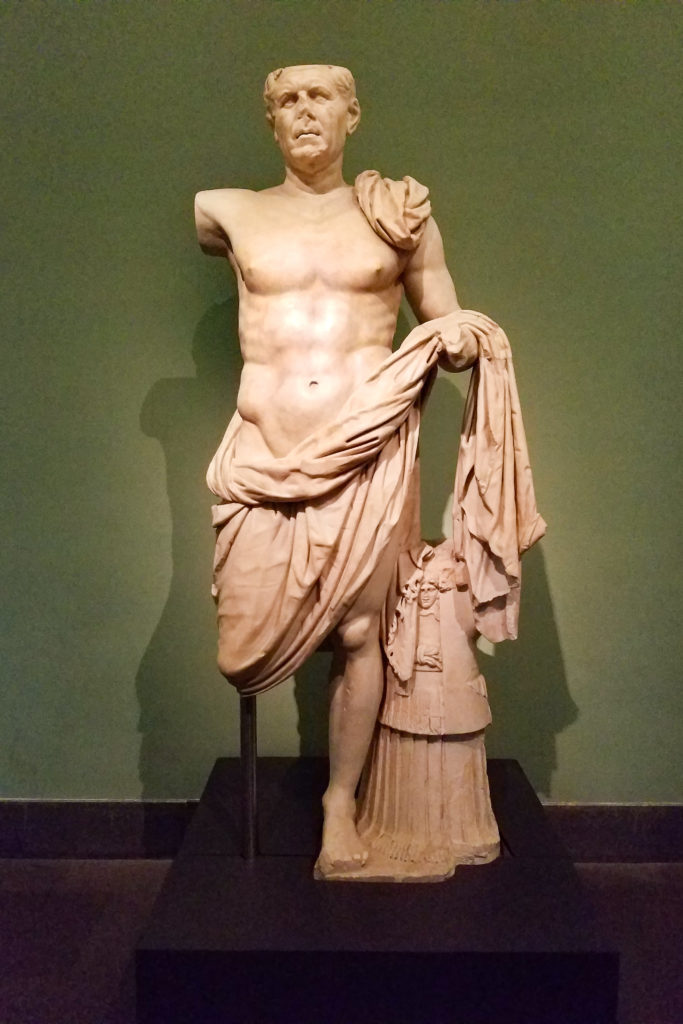
In the next room, we saw a familiar figure in a different role. I learned about Augustus Caesar, the first emperor of Rome, in high school, but I had only read about him in the context of his military and political leadership. I got to see a different statue of him in his religious role as Pontifex Maximus, the highest priest of Rome.
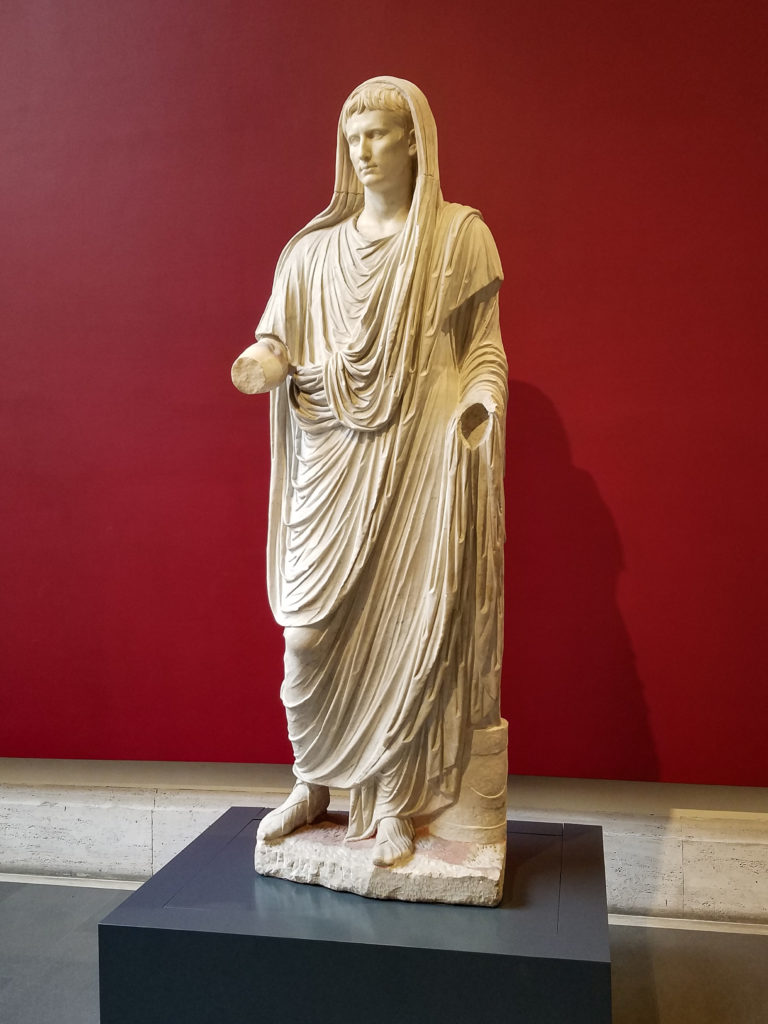
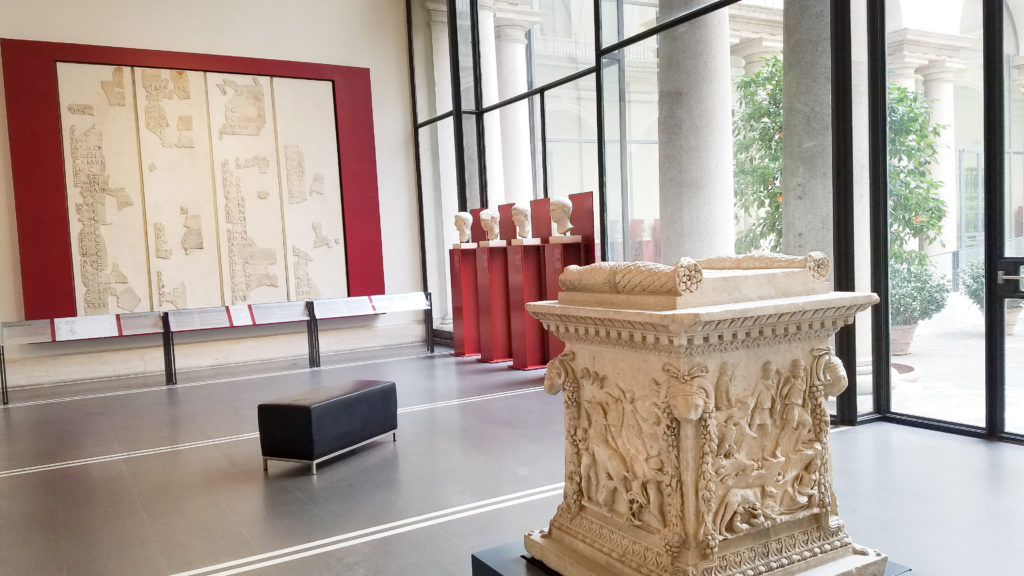
One of the more famous pieces in the Palazzo Massimo is the bronze Boxer. Bronze statues are rare because historically, many of them have been melted down and so that the raw material could be repurposed. The Boxer has realistic wounds on his face that make him look like he was in a fight today.

Many of the artifacts in the Palazzo Massimo come from the estates of wealthy Romans, who displayed elaborate art in their gardens. The museum houses one of the only true Greek originals, found in the gardens of the Roman writer Sallust.
In the basement of the museum is an important find in the city: the Grottarossa Mummy, unearthed in Rome in 1964. The mummy is of an 8-year old girl from the 2nd century C.E. While my classmates and I initally thought she might have been Egyptian because the practice of mummification came from Egypt, the girl is a fully Roman mummy. DNA analyses conclude that she was likely native to the area.
The girl was found in an intricately-carved marble sarcophagus, currently displayed in the same exhibit. The coffin depicts scenes from the Aeneid, a famous epic poem written under Augustus. The main character on the sarcophagus is not Aeneas, the hero the poem is named after. Instead, the carvings show his son, the boy Iulus, participating in a hunt.
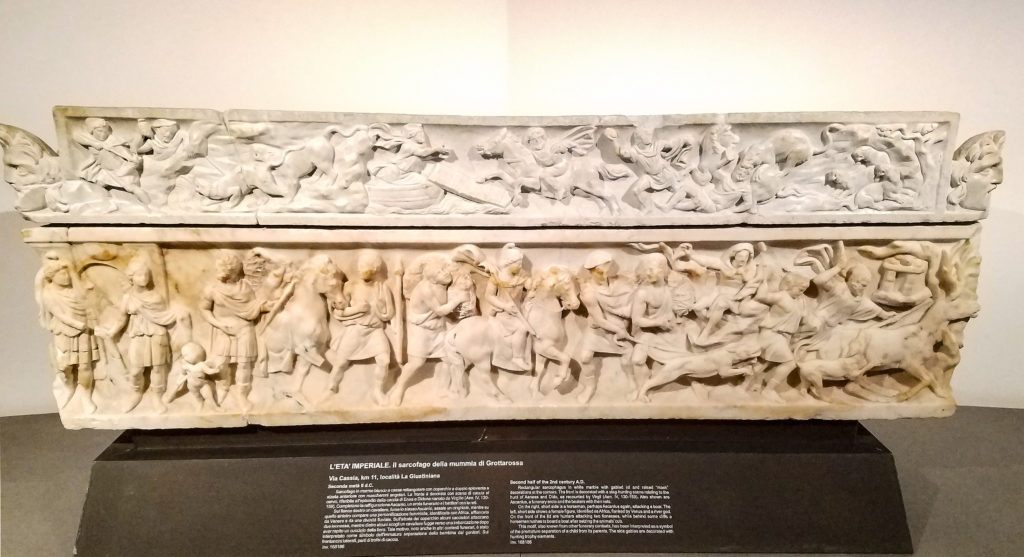
Near the mummy and the sarcophagus are also the objects found in the girl’s tomb. She was from a wealthy family that could afford not only to mummify her, but to do so with elegant jewelry. Right next to the necklace and amulets was the girl’s childhood doll, which would have been left at a special temple when she reached puberty.
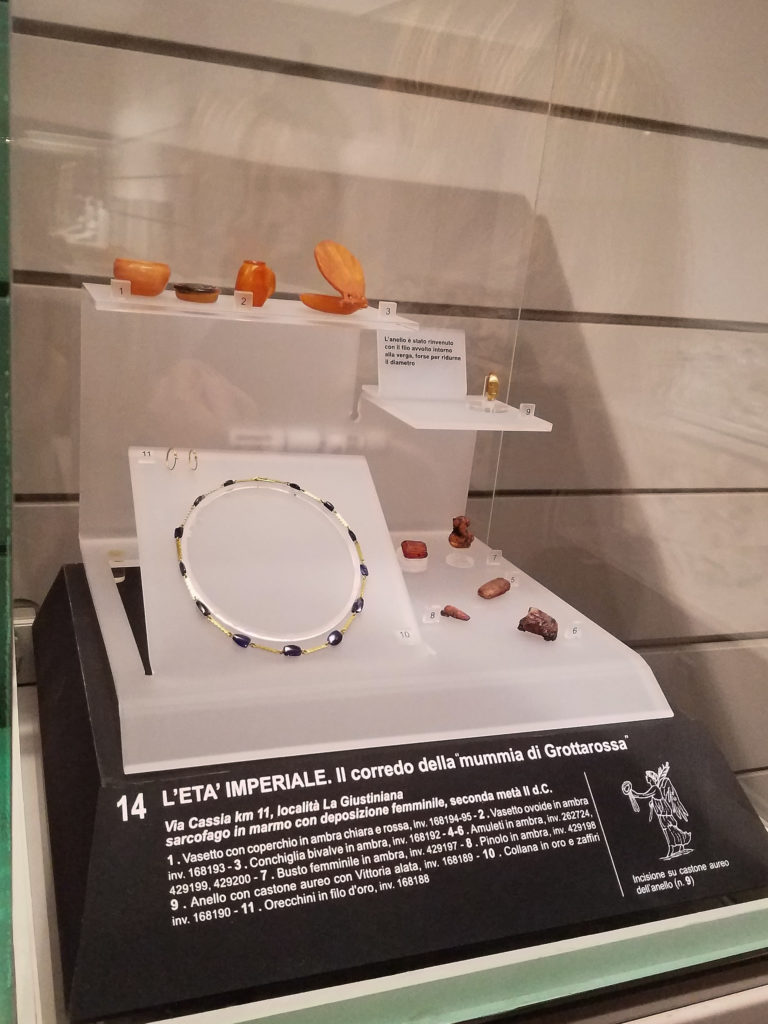
We went back upstairs to look at some earthenware and glassware from around the Roman Empire. Professor Bessi told us about how many of the objects we saw in front of us in the room were Gallic versions based on ancient Roman designs. This imitation craftsmanship was widespread throughout the empire, even reaching parts of Africa as well. Glass was also a commonly-reproduced material throughout the empire.
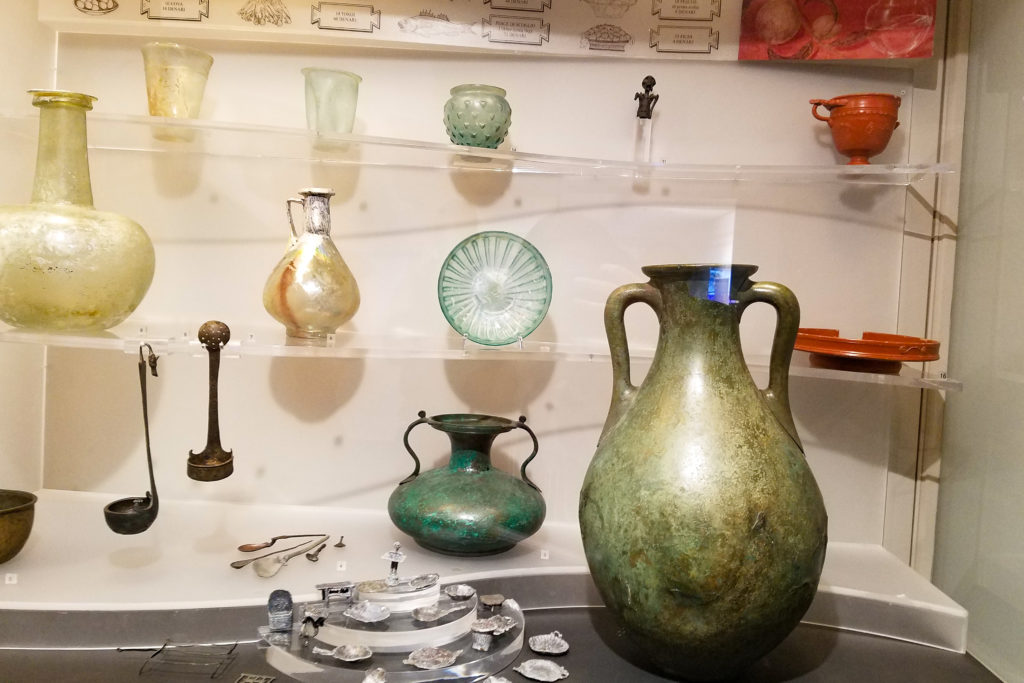
The Gauls were not the only ones to make imitations of classical crafts – the Romans also made copies of Greek art. The Discus Thrower is a famous example in the museum. It is a copy-of-a-copy of an ancient Greek bronze statue that is thought to be lost.
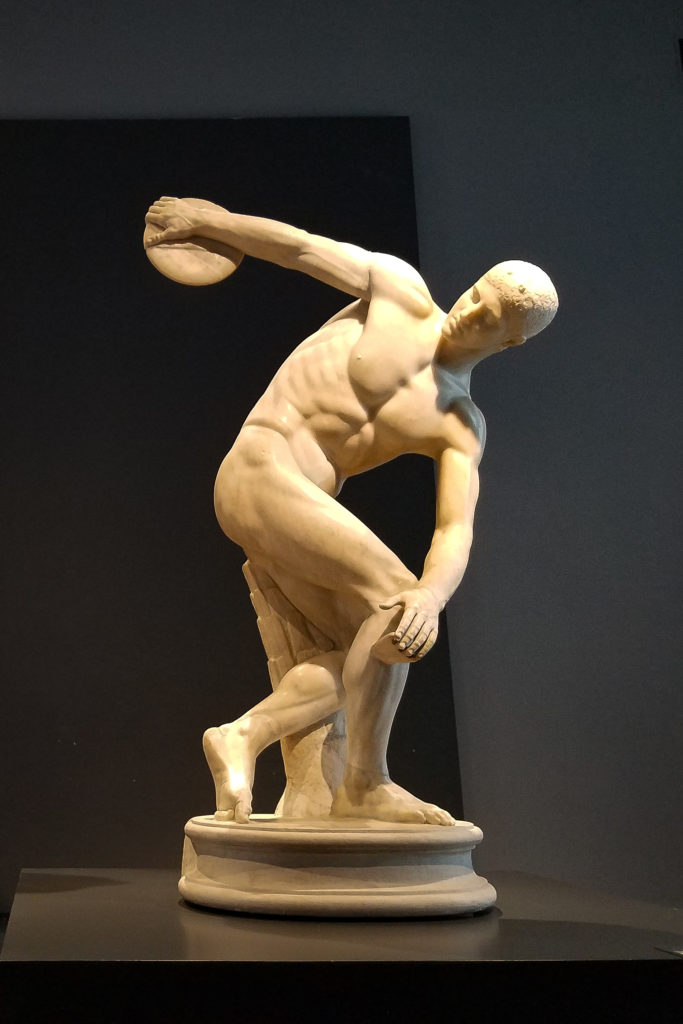
We also saw some artifacts recovered from the sunken Nemi ships. Unlike statues like the Boxer on land, bronze pieces submerged in shipwrecks were not prone to getting melted down and thus were preserved underwater. It was interesting seeing so many bronze animals holding rings in their mouths while similar statues on land might have had their material repurposed above sea level!
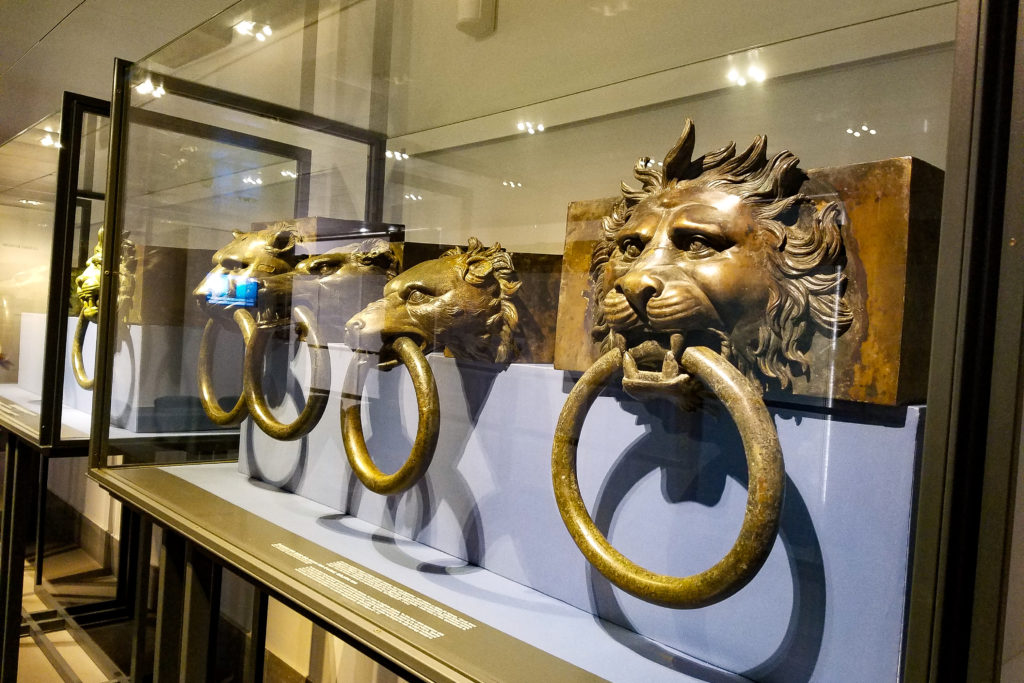
In class, we learned about ancient Roman interactions with the people of Africa. What I found fascinating and noteworthy in studying these relations is the fact that from the late 2nd century to the early 3rd century C.E., Rome was ruled by an emperor from a region called Leptis Magna, which is in modern-day Libya. His name was Septimius Severus, and he was the founder of the Severan dynasty in ancient Roman history. Professor Bessi said that he spoke Punic, the language of the ancient Carthaginians in north Africa, as his first language and spoke Latin with a Punic accent in Rome.

Further along in our tour of the museum, we saw another remnant of ancient Roman interaction with Africa. There was a sculpture of a woman in Egyptian garments and headdress. She represents Egypt, which became a province of Rome in the beginning of the empire. I’m thankful for her choice of attire, because I can figure out who she is!
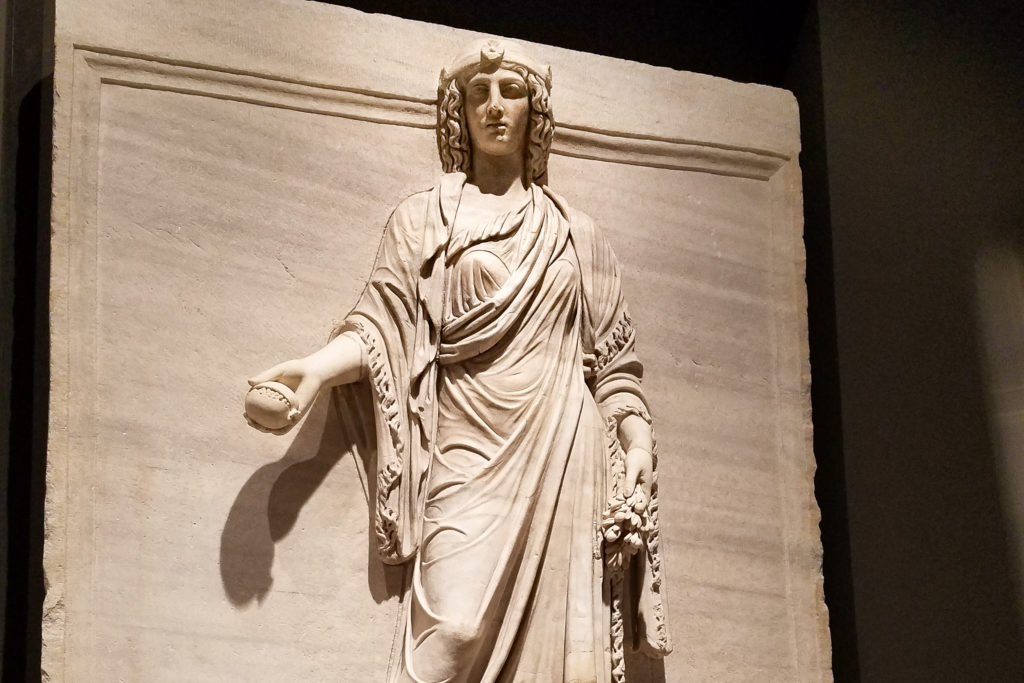
We saw a reprise of the Greek hero physique in a statue of Antoninius Pius, who ruled the empire in the mid-1st century C.E. He is depicted with an ideal body and a proportional face. It seems that he is immortalized in the prime of his life in this grand likeness of him.

In the last room we saw on our trip, there were intricately-carved sarcophagi. I was blown away by the detail on the so-called Muses Sarcophagus. It must have taken ages to carve!
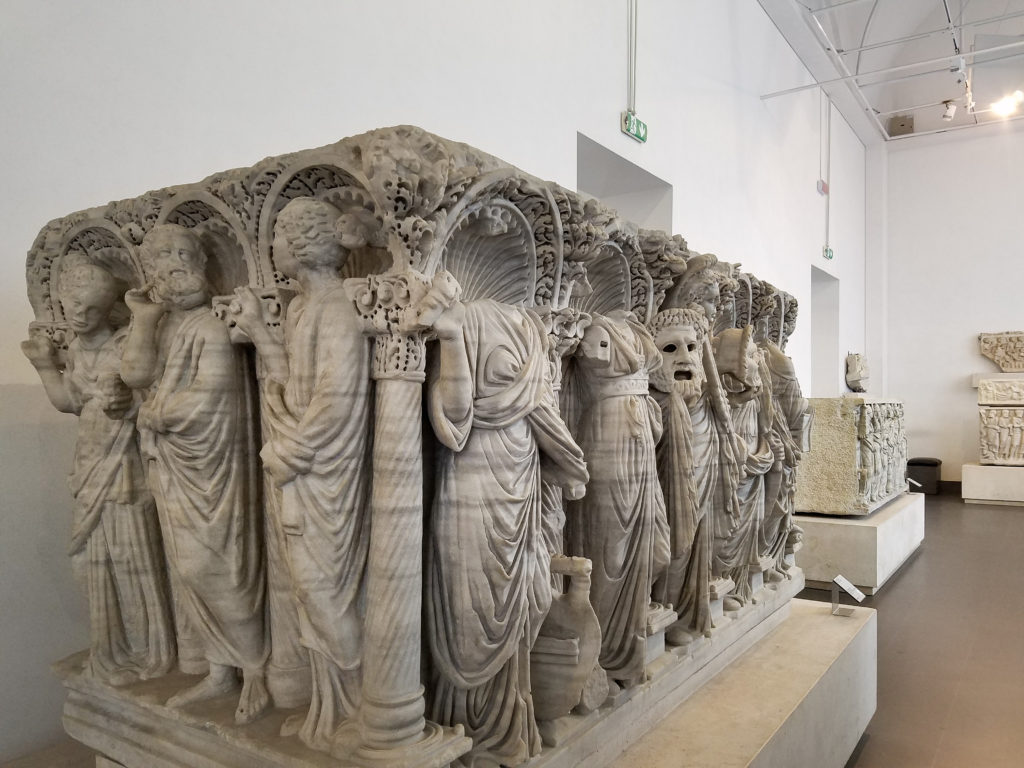
Professor Bessi stopped at a very important artifact for our class: the sarcophagus of Marcus Claudianus. We learned about the ancient Christians and how they interacted with the Romans in class, and I was surprised to see Christian iconography on the coffin. One of the main challenges in reconstructing ancient Christian history is the lack of iconographic evidence due to the people’s aversion to depicting themselves and their faith at the time.
The carvings on this sarcophagus are invaluable to tracing the Christian presence in Rome before Christianity became widespread in the empire in the 3rd century onward. Not to far away from the massive piece was a smaller work of art depicting Jesus as Orpheus, a character from classical myth known for his ability to move anyone with his music. He is known as “Iesus Docente,” which roughly translates as “Jesus as Teacher.” Interesting to see Roman myth and Christian beliefs overlap!
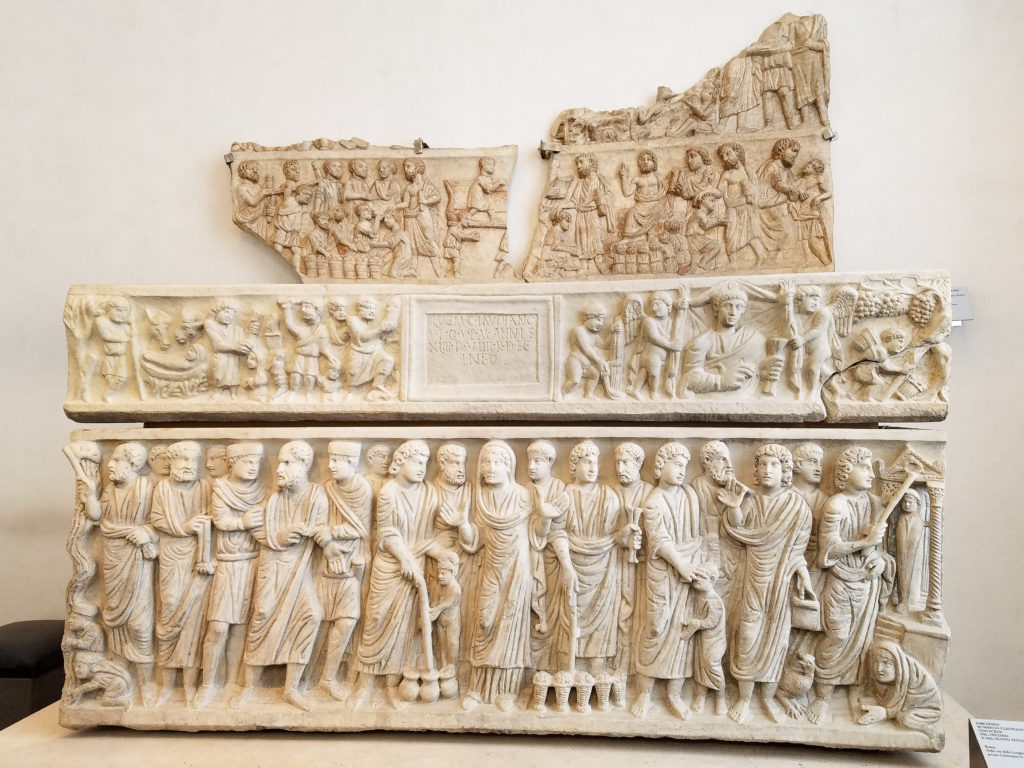
I was sad to leave the museum after this visit. This was my last class trip for Race in the Ancient Mediterranean, and my last class trip at Temple Rome. I enjoyed learning through a very active, in-person perspective during my time abroad, and I will look fondly on my photos and written reflections in the future to relive these experiences.



Incredible! This blog looks just like my old one! It’s on a
entirely different subject but it has pretty much the same
layout and design. Superb choice of colors!
Like!! I blog quite often and I genuinely thank you for your information. The article has truly peaked my interest.
It agree, very useful message
https://amic.co.in/catalog/font/
For newest news you have to visit internet and
on world-wide-web I found this web site as a best website for hottest updates.